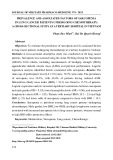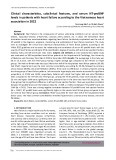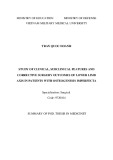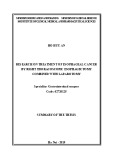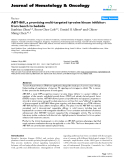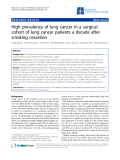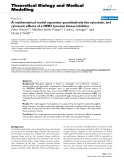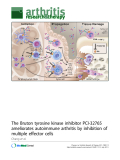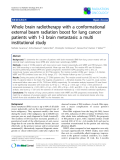
according to GLOBOCAN 2018 database, there was an estimated 23667 new
lung cancer cases, with the 2nd ranked in all cancers, after liver cancer.
Smoking is considered the major risk factor of lung cancer, that
approximately 80- 85% of lung cancer patients in the world smoked. Other risk
factors of lung cancer include: air pollution, ionized radiation, occupational
exposure, virus, diet, history of respiratory diseases.
Researches of molecular level revealed that the development of lung
cancer had several periods with the interactions of some factors, the
sensitization of genes, cumulative process of gene mutations of oncogenes and
tumor suppressor genes. Genes regulations is originally smooth and tight, when
it is impaired it can lead to the abnormal enhancement or inhibition of
functional genes.
With whole genome sequencing of a clone of lung cancer cells, it is partly
understood about intracellular mediators signaling pathway related to the
activation of oncogenes and deactivation of suppressor genes. The activation of
oncogenes through the signaling pathway of EGFR and other tyrosine kinase
receptors such as MET, Her-2, c-KIT, IGF-1R... in addition with the following
activation of RAS/RAF/MEK/MAPK, PI3K/AKT and JAK/STAT can lead to
the nonstop proliferation, differentiation, invasion, metastasis and resistance to
apoptosis.
In normal cells, the activation of EGFR is necessary for several crucial
functions of cells such as the proliferation and differentiation. But the extreme
activation due to gene mutations can lead to the abnormal proliferation as well
as the transformation of cells. In addition, the impaired activity of EGFR due to
gene mutation can lead to maglinant disorders. The mutation in exon 18- 21
makes EGFR to be in activating status independent from mediators.
Features of EGFR mutations in NSCLC patients include: high rate in non-
smokers, more common in adenocarcinoma type compared to other types of
NSCLC, females are more common than males, higher rate in East Asian
patients compared to other races.
2. EGFR-TKIs therapy for lung cancer
EGFR mutations had a quite high prevalence in NSCLC patients,
especially the adenocarcinoma and in non-smokers. Researches in Europe and
North America showed the prevalence of mutations is approximately 17%,
while it is up to 78.8% in East Asia. With whole genome sequencing,
researchers can identify a number of mutations of EGFR influencing the
response to TKIs. The common mutation of EGFR being sensitive to TKIs is
LREA (exon 19) and L858R (exon 21). Some EGFR-TKIs being used recently
are erlotinib, gefitinib, afatinib. Clinical trials showed that EGFR-TKIs help
prolong non-disease survival time better than standard chemotherapy. 6 phase






